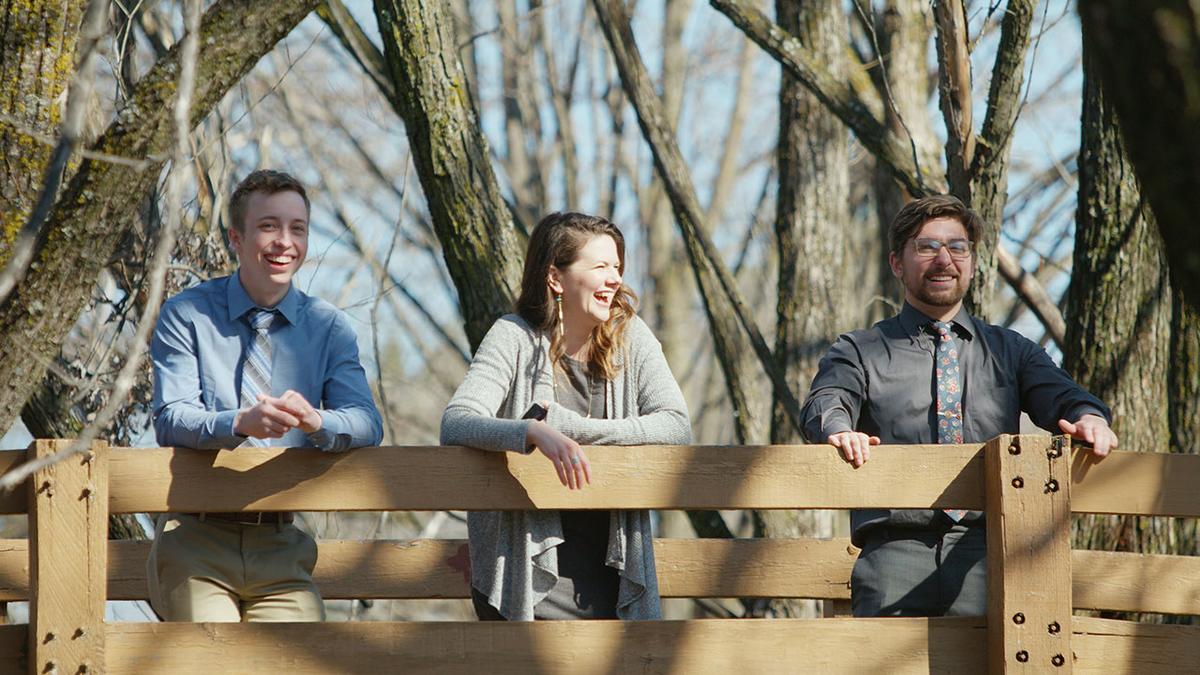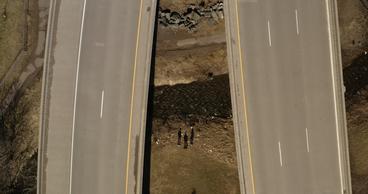Duluth is a city where industry and nature are intertwined. Highways and roads wind their way over and through parks, including Keene Creek Park, about five miles southwest of downtown Duluth. There, one side is a creek in the middle a dog park and playground, and the other side holds the U.S. Highway 2 overpass. “Runoff from from the highway goes straight to the creek,” says environmental sustainability and biology student, Bryant McLelland. “Eventually, the creek goes into the St. Louis River and Lake Superior.”
Making Green Spaces Work
Bryant is part of a UMD senior seminar class taught by Kendra Dean, a faculty member in the geography department. The team is working on two sustainable parks with the City of Duluth, one at City Hall and the other at Keene Creek. “It was really eye-opening to see just how much work needed to be done at Keene Creek,” says Kaleb Montgomery, who is studying environmental sustainability and geographical information systems (GIS).
Keene Creek Park has many issues and the city has called on UMD students to help solve them. Long pillar-like pipelines stretch down from the highway that lead directly to the nearby creek. Trash litters the area below the bridge. There is runoff from the dog park, foot traffic, and sediment buildup from the overpass, and all of it pollutes the surrounding water bodies.
“The project will give students a chance to actually work with the City of Duluth and apply all of the things they have learned throughout their undergraduate career to a project,” say Kendra. ”If it’s implemented in the city, it will actually have an impact on the people of Duluth.”
To Mow or Not to Mow
The class assignment was to determine what areas to should be designed to plant with grass and mow. Mowing costs the community money and students had to figure out how to distribute the land use in the park. They planned areas to leave as grass, restore to its native habitat, put it into timber management, or give it another use. They looked at strategies to keep the land resilient such as stormwater sequestration, carbon sequestration, stormwater filtration, pollinator habitats and habitat enhancement.
Bryant was responsible for looking into current mowing regulations in Duluth as well as researching native and invasive plant species in the area. Because runoff from parking lots and other paved areas can pollute nearby bodies of water, Bryant didn’t recommended grass in those areas. “Instead, you are going to want to plant native species to soak up that runoff, Bryant says. “ Recreational areas where people go to socialize and hangout need mowing.”
Enhancement, Restoration, and Communication
Kaleb worked on mapping and utilizing GIS to select what areas of the park needed enhancement, restoration, or to remain the same. “We found a lot of places that need enhancement,” Kaleb said. “Putting in a tree plug or putting in a rain garden can really create a distinct identity for each park.” He explains that “being able to display a visual representation of the parks to the city was a big step for our project. You can hand out a map and people can interpret the results by themselves. GIS is really important tool to display information. It was one of the key elements to our project.”
Amy Bendtsen, a senior majoring in psychology, Hispanic studies, Latin American studies, and environmental sustainability, focused on community outreach and public engagement. “Cities should put more effort into informing citizens about what is going on in parks,” she says. Better communication will encourage park goers to utilize the park under the new plan. Amy suggested implementing a promotion following “the idea of Duluth being a nature city.”
“We got to make this project our own and explore a real-world scenario,” Kaleb says. “We applied our multi-faceted, interdisciplinary degree and we did it with our boots on the ground.”
Learn more about UMD's Geography program
Photo above: (l-r) Bryant McLelland, Kendra Dean, and Kaleb Montgomery.
Emma Beddoe is a student writer who is a marketing major with minors in communications and hispanic studies.


